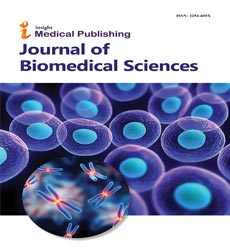Abstract
The Cytotoxic Effects of Spike Proteins and Hydroxychloroquine
Title: This study shows the effect of Hydroxychloroquine (HCQ), one of the drugs currently under investigation for Severe Acute Respiratory Syndrome Coronavirus 2 (SARS-CoV-2) treatment, on the cytotoxicity caused by spike proteins.
Background: The emergence of the novel pathogenic SARS-coronavirus 2 (SARS-CoV-2) is responsible for a worldwide pandemic. The first step of the viral replication cycle, attachment to the surface of respiratory cells, is mediated by the spike viral protein. It sets off a sequence of reactions that would eventually lead to viral spread and cell death. If we debilitate the spike protein either with a drug like Hydroxychloroquine that’s known to mitigate Spike proteins from similar viruses, then the cytotoxic effect of SARS-CoV-2’s spike protein (SARS-S-2) is stopped.
Methods and Findings: We utilized multiple 96 well plates and a single 6 well plate with cell cultures of vero cells to perform various tests. Such as the: MTT Cell Proliferation Assay, LDH Cytotoxicity Assay, Caspase Apoptosis Assay, The Hematoxylin and Eosin (H&E) Staining, and the Trypan-Blue Cell Exclusion Assay, to assess the amount of dead cells in each culture and by extension the level of Cytotoxicity. For all 5 tests, the process could be summarized as: adding a chemical to the cultures, recording a reaction over a period of time ranging from a few minutes to over 48 hours, and then comparing the results between the groups. These cell cultures were divided into different treatment groups, some were injected and incubated with recombinant SARS-S-2, a certain dilution of HCQ, both, and neither.
The MTT Cell Proliferation Assay uses a student t-test to determine consistent statistical significance in the group of results, unfortunately the % viability results from the MTT Assay didn’t pass the test. The LDH Cytotoxicity Assay also had Cytotoxicity results that didn’t pass the 95% confidence interval for the cell cultures with spike proteins in them. The Caspase Apoptosis Assay found that overall there're greater levels of apoptosis caused by spike proteins than HCQ. The H&E Staining revealed that the group with HCQ added to the spike protein had a greater area of living cells than the group with only spike proteins added. Specifically 113.9796% and 106.8545% of the control group’s area, compared to a mere 49.7479% on it’s own, with a t-test confidence of over 99%. Unfortunately the Trypan Blue Assay had the same issue as the MTT and LDH Assay with the failure to break out of statistical significance. Outside of that issue pervading through 3 out of the 5 experiments, main limitations of this experimental design is the use of Vero cells rather than critical organs in vivo and that the H&E Staining and Trypan Blue Staining experiments were reliant on samples of photos taken on the microscope and not necessarily a reading of the cell culture as a whole.
Conclusion: The general consensus among all the assays, was either inconclusive or in support of the idea that the presence of HCQ mitigates the cytotoxic effect of SARS-S-2; With the added caveat that HCQ on it’s own was cytotoxic in it’s own right. In the future one could follow up on this study with alternate combinations of drugs like Remdesivir or Camostat Mesylate.
Author(s):
Robert Zheng
Abstract | PDF
Share this

Abstracted/Indexed in
- Google Scholar
- Genamics JournalSeek
- China National Knowledge Infrastructure (CNKI)
- Directory of Research Journal Indexing (DRJI)
- WorldCat
- Secret Search Engine Labs
Open Access Journals
- Aquaculture & Veterinary Science
- Chemistry & Chemical Sciences
- Clinical Sciences
- Engineering
- General Science
- Genetics & Molecular Biology
- Health Care & Nursing
- Immunology & Microbiology
- Materials Science
- Mathematics & Physics
- Medical Sciences
- Neurology & Psychiatry
- Oncology & Cancer Science
- Pharmaceutical Sciences

